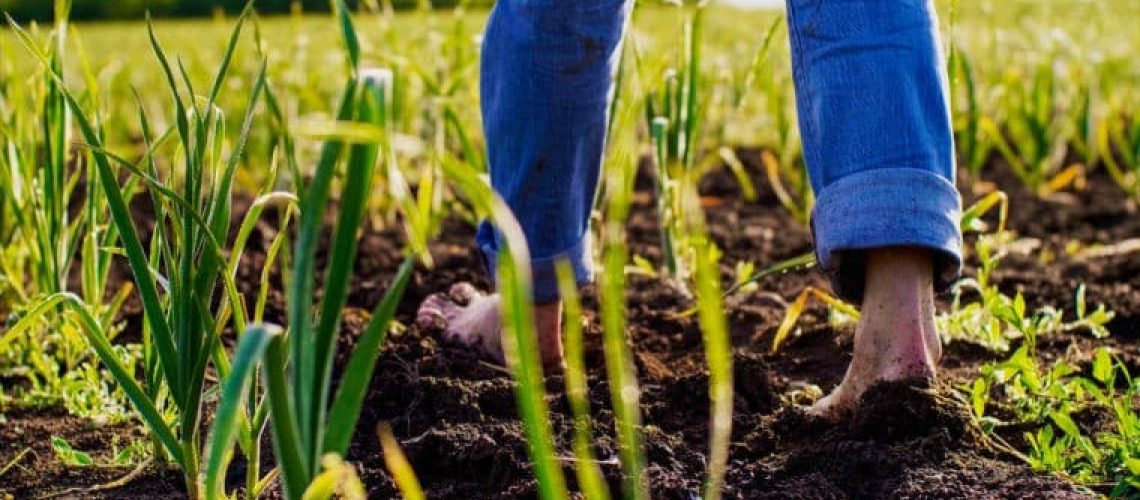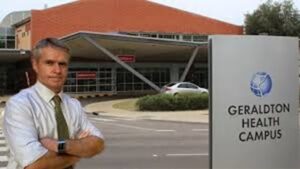Those farmers who track Minister MacTiernan’s media will have noticed that she has an interest in the principle of regenerative agriculture which aims to restore the state’s soils from the damage inflicted by intensive modern farming methods.
Last week, the Minister opened the first Regen WA Conference, which aims to promote the concept of new age agriculture as laid out by agricultural scientist Dr Charles Massey, the messiah of regen in Australia and renown author of ‘Call of the Reed Warbler’.
Massey’s book documents his self-described “mistake ridden journey” as a farmer, one that started with what he terms as the industrial agricultural paradigm of treating nature as the enemy. He subsequently embraced ‘ecological literacy’ – essentially his understanding of how to read landscapes and, as he terms it, simply to “get out of mother nature’s way”.
His story was told to a packed conference which included over 80 farmers, many of whom were not hemp wearing organic types from Balingup as I had expected – there was a solid mix of wheatbelt number plates in the car park.
The Minister (after roll calling to make sure WAFarmers were in attendance) laid out her vision of agriculture and did a good job winding down perceptions that she was embarking on an organic green crusade to wean farmers off their chemical dependency. Her vision was for more balance around risk and soils and the need to look harder at what sustainable farming means in today’s world of climate change. Nothing any farming family would not be thinking about with the help of their advisors.
As an open minded sceptic, I followed the day’s proceedings closely and was ultimately convinced that most of the messaging would fit comfortably with current agronomy advice and practices undertaken in the wheatbelt. Discussions on topsoil preservation, micro biodiversity, water retention, soil compaction and soil carbon were all part of the presentation which would fit into any grower group trial day.
But at times things did go a little off the science script into scripture, preaching the virtues of ‘holistic management’, ‘ecological literacy’ and ‘indigenous farming systems’. Biblical verses were quoted, and prophesies of climate doom proclaimed, even the evils of glyphosate were inextricably linked to soil damnation and autism unless the sins of the past are not redeemed.
But then any religion needs stories to resonate with the true believers. Science-based facts get a bit dry and it becomes hard to drum up a crowd without some doom and a future promise of a promised land. But I’m happy to report that the Minister and her Department are not among the evangelical movement and are not embarking on a pilgrimage to The Shire, that place where Hobbits from the Lord of the Rings live in perfect organic harmony with the environment.
Rather, the Minister stuck to the science and her obvious interest in soil health is now reflected in the Department’s regen web site of listed priorities, which reflects the direction most farmers have been going for the past 40 years since the introduction of no till and the more recent focus on stubble retention and tram tracking.
In fact, the Departments approach is more along the Conservation Agriculture approach that has been developed by Cornell University which has taken a scientific approach to regenerative agriculture minus the evangelical faith. It focuses on a win win approach to production around how to attain higher yields with less labor, less water and fewer chemical inputs while minimising the disruption of the soil’s structure, composition and natural biodiversity.
Fortunately, the Department is going down this sort of scientific path when looking at how it targets regenerative agriculture research and development priorities including looking at carbon farming, reducing subsoil constraints, soil stability, and water management – all of which are good agronomic principles that are being taught to the next generation of agricultural scientists at university.
In fact, the Department to its credit, maintains an agnostic view to the regen movements more outlandish claims by noting that many of the successes claimed by regenerative farming advocates are anecdotal, with limited valid scientific reporting to demonstrate the long-term economic or sustainable benefit.
As quoted from their web site; ‘To drive practice change by agricultural producers, solid credible evidence is required on the impact and repeatability of regenerative agriculture practices on the physical, chemical and biological health of the soils and the associated long-term economic, environmental and social benefits.’ A position any WA Farmer would like the Department to take.
Following the conference, I wrote to the Minister with a long list of suggestions on how to target future funding in this space to ensure constructive outcomes. All too often peak bodies find it therapeutic to throw rocks at Ministers when they don’t like or understand the policy direction that they are heading towards. But when there is a genuine interest in an area of agriculture by a Minister and there are solid grounds for their concerns (salinity, erosion, acidification, compaction) there is no harm in constructively engaging in project development.
My view as I put it to the Minister, was that if the government is serious about supporting regenerative (conservation) soils theories, it should resurrect one of the big research farms and run the whole place on the principles of minimal inputs on a long term rotation to see if it does maximise soil health and produce solid gross margin returns on scale.
What we did not hear about at any length in the conference is the normal agronomy field trial data and farm gross margin analysis that builds the case for change management. The normal stuff that farmers go to a grower group agronomy day to learn about or double check. We know that to lift soil organic matter in the first 15 cm from 1% to 5% would require up to 20 tonnes of organic matter a hectare to be incorporated every year for 20 years which gets hard to do if you are carting or walking off much of the biomass produced each year.
Building soil organic matter requires more than biomass; nutrients are also needed, either in the added biomass or from the soil. This is where it gets hard for our old soils which need inorganic fertilisers to produce big volumes of green material. But the regen messiahs claim that it can be done, and we already have disciples in the wheatbelt who are farming the regen way and who proclaim they have found soil salvation. The only problem is we don’t have the independent data and scientific papers to back it up.
Any modern prophet with their new religion needs to be tested. Extraordinary claims require extraordinary evidence. What counts as evidence are peer-reviewed publications in scientific journals – I have looked for the evidence to support the more outlandish claims of regenerative agriculture decrying modern chemicals and monocultures with the promise of profitable carbon oozing soils. What I have found are lots of YouTube videos, testimonials, articles and interviews, just as we heard at the conference. None of these sources are extraordinary evidence.
Extraordinary claims require extensive scrutiny, and just as farmers were slow to take up trace elements and no till farming, they will be reluctant to give up the chemicals, fertilisers, monocultures and continuous cropping without evidence that it will produce the milk and honey to keep the bank manager fat and happy.
If the claims of regenerative agriculture are real and repeatable, then they should be tried and tested by the Department under the Minister’s direction and how better than on a large farm scale trial. While some of the claims will fail to stack up scientifically others no doubt will stand the test of time, at the moment we just don’t know what in broadacre is regen science and what is religion.











